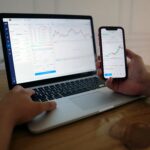Today, I will explain the following website. (AI-generated)
【米ドル円】東京海上アセットマネジメントが注目…10月最終週の為替相場にインパクトを与える「重要な経済指標」(THE GOLD ONLINE(ゴールドオンライン)) – Yahoo!ニュース
Contents
Understanding the Impact of Economic Indicators on USD/JPY Exchange Rates
Economic indicators are vital tools that help investors and traders understand the health of an economy and predict future market movements. In the context of USD/JPY exchange rates, indicators such as employment data can have a significant impact on currency values. A robust job market in the U.S. can strengthen the dollar against the yen, while weak employment numbers can lead to a weaker dollar.
Reflecting on the U.S. Employment Data for September
The September U.S. employment report showed a stronger-than-expected increase in non-farm payrolls, with an addition of 254,000 jobs exceeding market forecasts. Additionally, revisions to July and August figures added another 72,000 jobs, indicating underlying strength in the labor market. Such positive data is likely to influence the USD/JPY pair as it reflects economic resilience.
How Unemployment Rates Affect the Forex Market
The unemployment rate is another critical indicator for forex traders. A decrease from 4.3% in July to 4.1% in September suggests easing recession fears, which can bolster investor confidence in the economy and potentially strengthen the dollar against the yen. Understanding these trends is crucial for making informed trading decisions.
Anticipated Effects of Upcoming Economic Indicators
Traders often look ahead to anticipate the impact of future economic reports. For instance, expectations for October’s unemployment rate to remain steady could align with predictions of further interest rate cuts by the Federal Open Market Committee (FOMC) in November and December, as implied by Federal Funds futures. Such expectations can pre-emptively influence the USD/JPY rates.
Interpreting Market Movements and Trading Strategies
Market movements are not random; they’re often a response to economic indicators. By interpreting these indicators, traders can develop strategies to capitalize on the fluctuations in the USD/JPY exchange rates.
Reading Between the Lines: What Employment Statistics Tell Us
Employment statistics offer more than just numbers; they provide insights into economic momentum and policy decisions. For example, a strong employment report may reduce the likelihood of interest rate cuts, which in turn could lead to a stronger dollar.
Forecasting the Federal Reserve’s Interest Rate Decisions
Interest rate decisions by the Federal Reserve are among the most influential factors for the USD/JPY pair. Traders closely monitor employment data and other economic indicators to forecast these decisions. A stable or improving labor market could signal less aggressive monetary easing, affecting currency strength.
Expert Analysis and Insights
Expert analysis can shed light on the nuances of economic data and its implications for currency markets. Such insights are invaluable for traders looking to understand the complex dynamics of forex trading.
Understanding the Sam Rule and Its Implications
The ‘Sam Rule’ refers to a scenario where a recession is anticipated if the average unemployment rate over the past 12 months is exceeded by 0.5% in the most recent three-month average. Awareness of such rules helps traders predict potential market downturns.
Assessing the Impact of Natural Disasters on Labor Markets
Natural disasters can temporarily distort labor market data, leading to volatility in currency markets. For example, concerns about the impact of hurricanes on U.S. employment were mitigated by a decrease in new unemployment insurance claims, suggesting a transient effect on the labor market.
What Tokyo Marine Asset Management’s Focus Means for Traders
When prominent financial institutions like Tokyo Marine Asset Management focus on certain economic indicators, it often signals their importance in market analysis. Traders should pay attention to such cues as they can provide a competitive edge in forex trading strategies.












